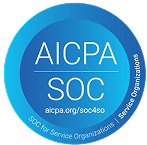FAQs
 What types of loans are available for Indian students?
What types of loans are available for Indian students?
Indian students can apply for private student loans, loans from Indian banks, university-specific loans and scholarships designed for international students. You may also want to explore loan options from the Indian government or private financial institutions in India that offer education loans for studying abroad.
 Do Indian students need a cosigner or collateral for private student loans?
Do Indian students need a cosigner or collateral for private student loans?
Many private lenders require some kind of collateral or a cosigner who’s a U.S. or Canadian citizen or permanent resident. However, some lenders offer study loans without collateral or no-cosigner loans based on academic performance and future earning potential. This can be particularly beneficial for Indian students who don’t have connections in North America.
 Are interest rates higher for no-cosigner loans for Indian students?
Are interest rates higher for no-cosigner loans for Indian students?
Since lenders accept more risk with no-cosigner loans, the interest rates may be higher. In general, rates depend on the lender, your academic background and your future earning potential. It’s always smart to complete an education loan comparison to find the best deal. You should also compare rates with those offered by Indian banks for education loans.
 Can I get a loan for a master’s programme as an Indian student?
Can I get a loan for a master’s programme as an Indian student?
Yes, some lenders offer master’s program loans to Indian students. It’s important to research and find lenders that cater to graduate students. Many Indian students pursue master’s degrees abroad, and there are specific loan options designed for postgraduate education.
 What documentation do Indian students need to apply for an MPOWER loan?
What documentation do Indian students need to apply for an MPOWER loan?
You’ll need your passport, visa documentation, proof of admission to an eligible U.S. or Canadian university, and academic records. Indian students should also be prepared to provide evidence of previous academic qualifications from institutions in India.
